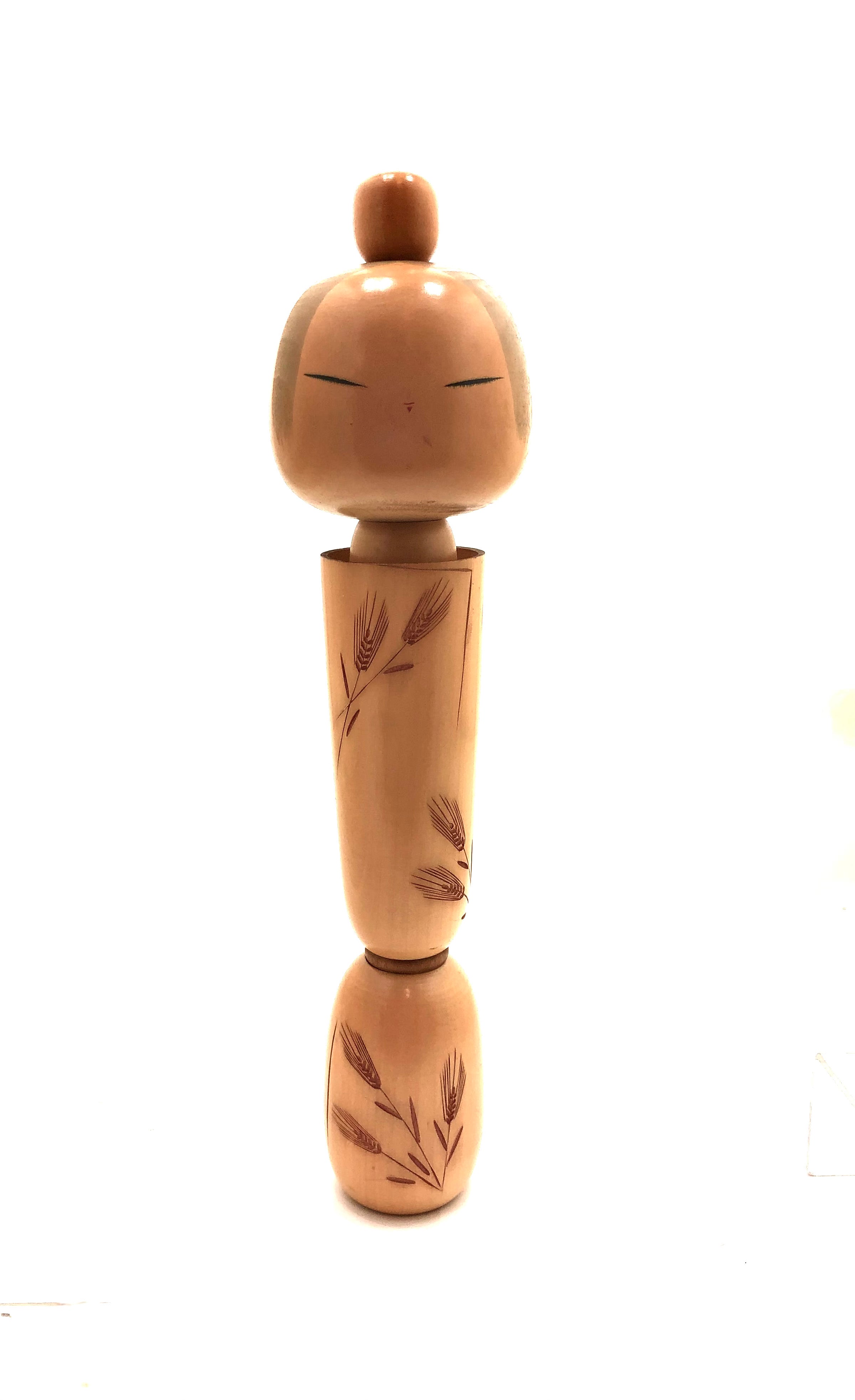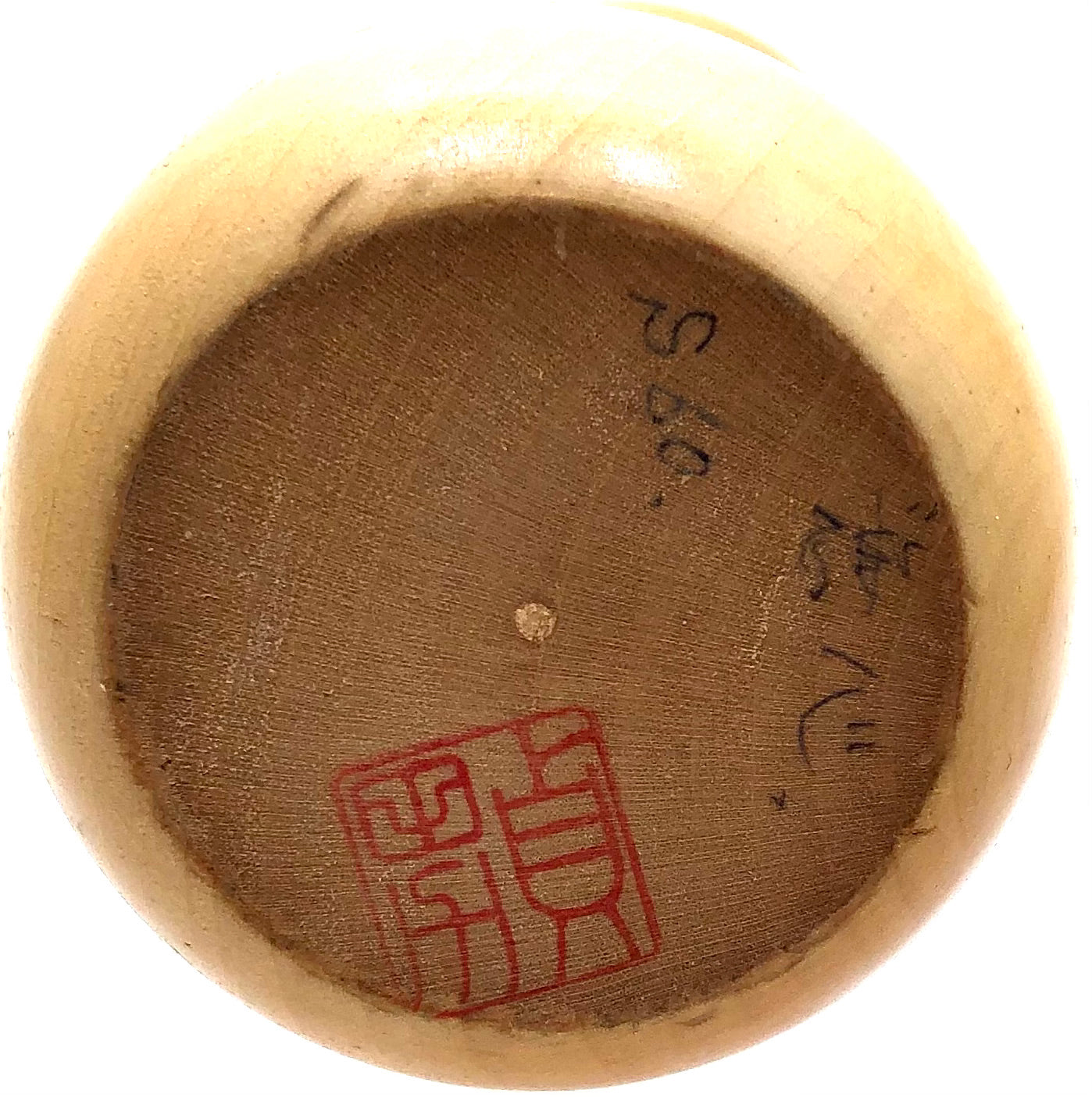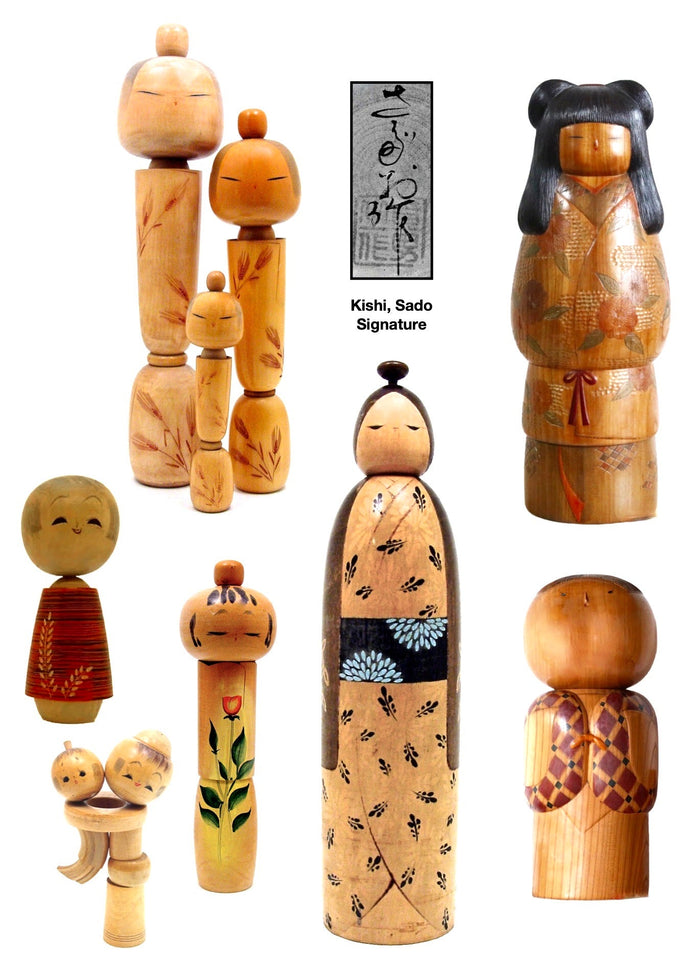

Japanese Creative Kokeshi | 'Seishin No Komugi' by Kishi Sadao
Dimensions: 15-1/2”h
This is a 1960 award-winning Kokeshi design, celebrating the Wheat Festival in Korobe Gorge. Wheat, when harvested, is golden brown, and so is appropriately represented as the central motif of this beautifully proportioned doll. Shown is a lathe-turned doll with an undulating form defining the various part of the body. The head shows its attachment to the body by a wonderfully formed neckline while the garment shows negative space between each section. The Kimono wheat design is beautifully rendered through wood burning in relief. The waist is specifically identified by a three-dimensional ring of different wood to bring attention to this detail. The face is extremely simple incorporating angled eyes and a suggestion of a nose and lips. The top of the head shows a Mage in which the hair is in a complex manner with a suggestion of hair falling on both sides of the face. The doll is both signed in the script by the artist as well as has his red impressed stamp on the bottom.
Condition: Excellent and commensurate with age with no fading of the painted motif. Wonderful workmanship, turning, and painted features.
NOTE: Born in Maebashi, Gunma Prefecture, Kishi- san produced hundreds of Creative Kokeshi dolls until his passing. During his career, he received numerous awards, winning the Prime Minister’s Award and the Minister of Economy, Trade, and Industry Award (METI). He is credited with being one of the major influences of the ‘Sosaku Kokeshi Movement’, gaining recognition for the dolls as a popular and valid art form.

Artisan
Woodworker: Kishi, Sadao
1932-1998
Biographical History:
Kishi-san was born in Maebashi, Gunma Prefecture in 1932 and produced an array of creative Kokeshi dolls until his passing in 1998. In 1950 he started creating Sosaku Kokeshi. During his career, he received numerous awards, winning the Prime Minister’s Award and the Minister of Economy, Trade and Industry Award (METI). He is credited with being one of the major influences of the ‘Sosaku Kokeshi Movement’, gaining recognition for the dolls as a popular and valid art form. In 1969 his Kokeshi entitled: “Spirit of Wheat” was purchased by the Crown Prince and Crown Princess. In 1970, he dedicated his work to the Enshrining Festival of the Meiji Shrine, representing his Kokeshi focused on the Korobe Gorge golden brown Wheat which was not only a central theme and the main agricultural enterprise in his native prefecture.
Collector's note – descriptive qualities, standard characteristics & ornamentation styles:
Many of his dolls illustrate both a burning technique as well as painting images which he initiated called, “Shou sugiban”, which creates three-dimensional qualities enhancing the garments on his Kokeshi and ‘Michiyuki’ (traveling coat) or Kimono. Many of his dolls have a three-dimensional ring of different wood to bring attention to his unique approach to the Obi. Other Obi were pronounced and showed flowers such as the chrysanthemum flower. Additionally, he incorporated simple flowers and subjects related to mothers and children as both form-giving and decoration on the bodies. The faces on his dolls are extremely simple incorporating angled eyes and a suggestion of a nose and lips. Many of his dolls featured a ‘Mage’, in which the hair is stacked, in a complex manner, with some incorporated decorative ‘Kanzashi’ (hairpins). He used a variety of woods including Castoaralia wood, and finished with a type of candle called, “Rōsoku no rō” All of his creations are beautifully proportioned and show a direct connection to everyday life. Several Kokeshi won the Prime Minister's Prize in 1983 and was featured in the Creative KOKESHI Artistic Handicraft Directory.
Explore & Learn More about Woodworker: Kishi, Sadao